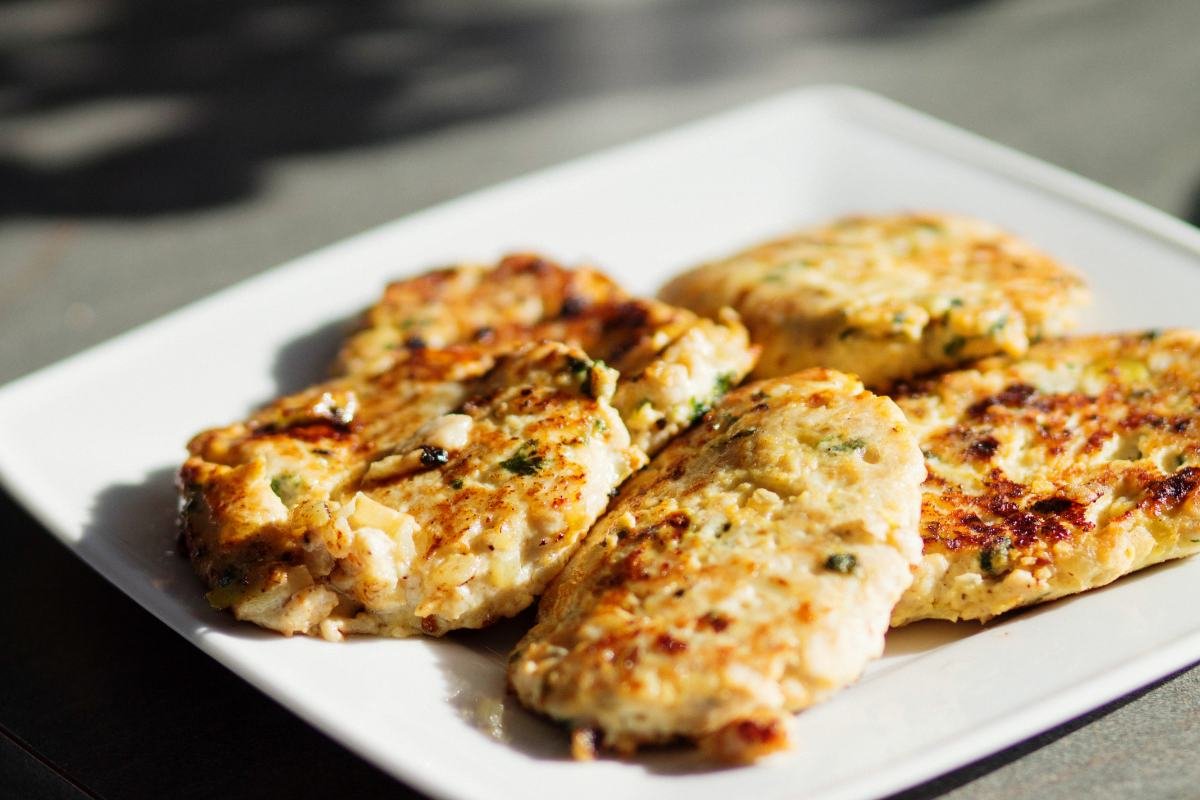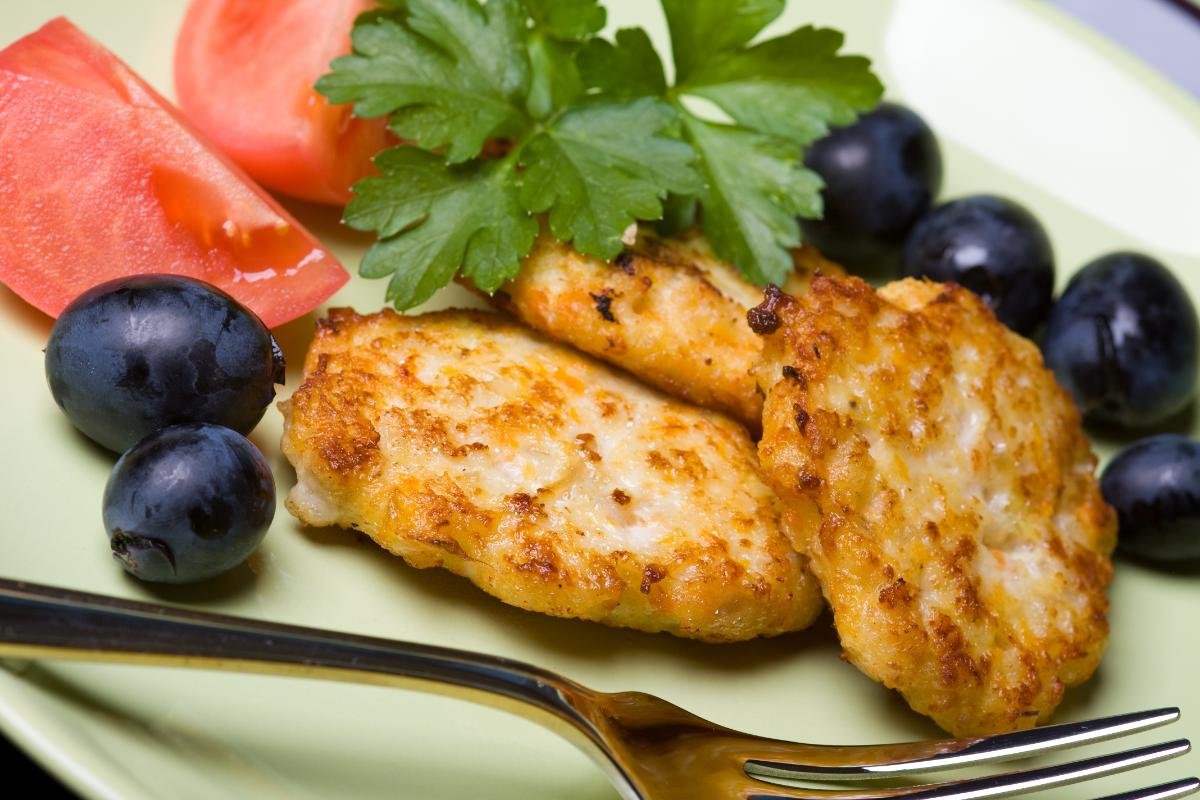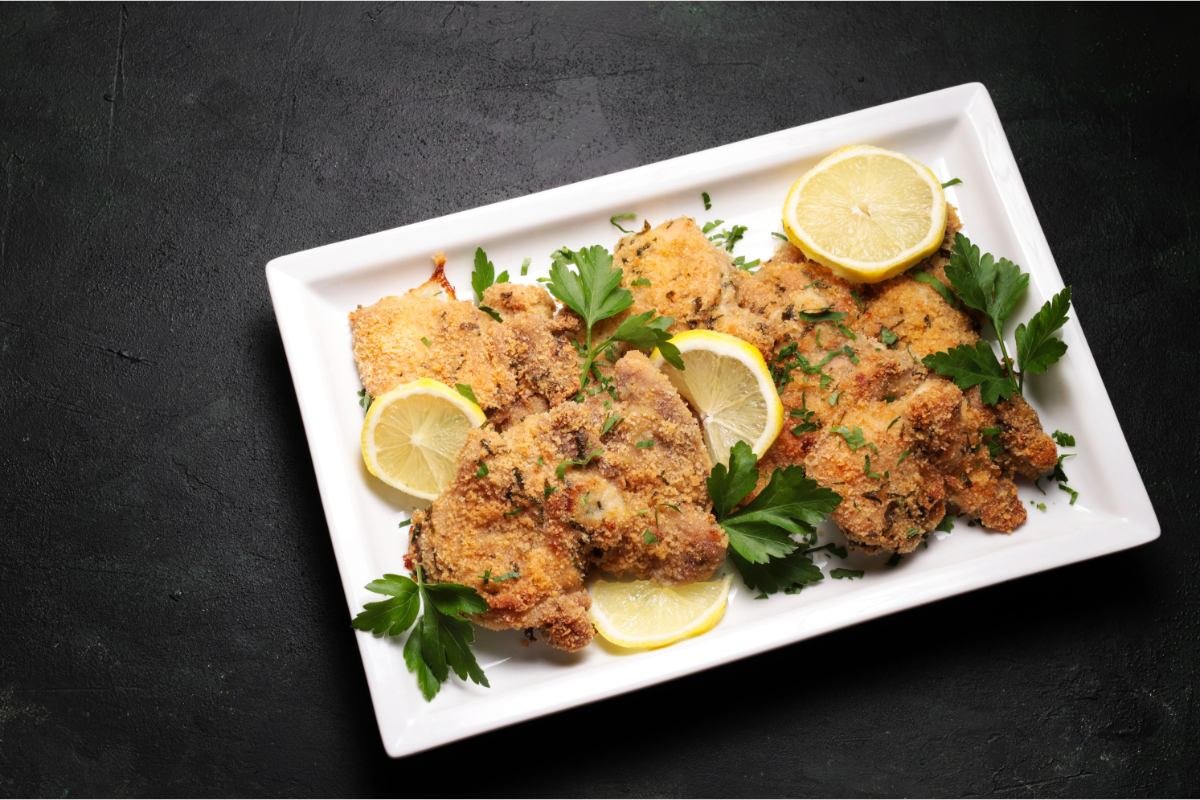Chicken cutlets charm food enthusiasts worldwide with their simplicity and flavor. These thin slices of chicken breast, perfectly tenderized, serve as the foundation for various delicious creations. They come in many forms, from classic breaded and fried to healthier grilled versions. Their quick prep and cooking times make them ideal for any meal, adding versatility to weeknight dinners and special occasions alike. Around the globe, each culture has tailored chicken cutlets to fit its culinary traditions, making them a global favorite.
The History of Chicken Cutlets

The journey of chicken cutlets through history showcases their transformation from a simple piece of meat to a global culinary staple. Initially, cooks in Europe found that pounding meat thin and breading it led to a delicious, quick-cooking dish. Italy and France, known for their culinary innovations, pioneered this method with veal and chicken. The Italian “Cotoletta alla Milanese” and the French “Escalope de poulet” illustrate this beautifully. Moreover, as people moved around the world, they took their recipes with them. This spread led to the adoption and adaptation of chicken cutlets in various cuisines. In the U.S., Italian immigrants introduced their beloved breaded cutlets, embedding them into American culture.
Types of Chicken Cutlets
Chicken cutlets, celebrated for their versatility, serve as the cornerstone for countless recipes across the globe. These thin slices of chicken breast, prepared with different techniques, embrace a variety of flavors and textures. Below, we explore the myriad ways chicken cutlets can be prepared, each method imparting its unique taste and culinary experience.
Breaded and Fried
Breaded and fried chicken cutlets stand as a testament to the beauty of simplicity in cooking. This preparation method involves coating chicken cutlets in a mixture of flour, beaten eggs, and breadcrumbs before frying them to golden perfection. The result is a cutlet with a crispy exterior and tender, juicy interior, embodying a contrast of textures that delights the palate.
Cuisines around the world offer their interpretations of this beloved dish. The Italian “Cotoletta alla Milanese” and the Japanese “Chicken Katsu” are prime examples, each reflecting their culinary heritage through the choice of breading ingredients and accompanying sauces.
Grilled
Grilled chicken cutlets offer a healthier alternative without compromising on flavor. Marinated in a blend of herbs, spices, and oils, these cutlets are then grilled to achieve a charred exterior and a succulent interior. Grilling not only imparts a smoky flavor but also highlights the chicken’s natural taste.
This cooking method is popular in Mediterranean cuisine, where olive oil, lemon, and herbs like oregano and thyme dominate the flavor profile. Grilled chicken cutlets are often served with fresh salads, roasted vegetables, or as part of a hearty sandwich.
Baked
Baking presents a fuss-free approach to preparing chicken cutlets, ideal for those seeking a balance between health and convenience. Seasoned or marinated chicken cutlets are baked in an oven, resulting in a dish that is tender, flavorful, and lower in fat compared to its fried counterpart.
This method allows for creativity, with variations including topping the cutlets with tomato sauce and cheese for a quick chicken parmesan or encrusting them with nuts and spices for added texture and flavor.
Pan-Fried
Pan-frying chicken cutlets in a small amount of oil offers a quick and easy method to achieve a crispy exterior while maintaining a juicy interior. This technique is perfect for creating dishes that require a golden-brown finish without the heaviness of deep frying.
Cooking cutlets in this manner is common in recipes that call for a savory crust, such as those incorporating Parmesan cheese or a mixture of herbs and spices. The key to perfect pan-fried chicken cutlets lies in the control of heat, ensuring the chicken cooks thoroughly without burning the coating.
Nutritional Information of Chicken Cutlets
Understanding the nutritional value of chicken cutlets is crucial for incorporating them into a balanced diet. Chicken, a lean source of protein, offers numerous health benefits, making cutlets a popular choice for those mindful of their nutritional intake. This section breaks down the nutritional aspects of chicken cutlets, considering dietary restrictions and offering insights into making healthier choices.
High-Quality Protein Source
Chicken cutlets are an excellent source of high-quality protein, essential for muscle repair and growth. Consuming adequate amounts of protein is vital for maintaining muscle mass, especially for athletes or individuals engaged in regular physical activity. A single chicken cutlet can provide a significant portion of the recommended daily protein intake, supporting bodily functions and contributing to a feeling of fullness, which can aid in weight management.
Low in Fat and Calories
When prepared using methods like grilling, baking, or pan-frying with minimal oil, chicken cutlets can be a low-fat and low-calorie option suitable for weight loss diets. Opting for skinless chicken breasts reduces the fat content further, making cutlets a lean choice for those aiming to decrease their calorie intake without sacrificing protein quality.
Rich in Vitamins and Minerals
Chicken cutlets offer more than just protein; they are also a source of essential vitamins and minerals. These include vitamin B6, crucial for brain health and energy production, and niacin (vitamin B3), important for cardiovascular health. Additionally, chicken provides selenium, a mineral that supports immune function and thyroid health, and phosphorus, necessary for bone health.
Considerations for Dietary Restrictions
For individuals with dietary restrictions, chicken cutlets can be a versatile ingredient. They fit well into gluten-free, low-carb, and ketogenic diets, especially when prepared without breading or with gluten-free alternatives. However, those with specific allergies or dietary preferences should carefully select their breading and cooking ingredients to ensure they meet their nutritional needs and restrictions.
Making Healthier Choices
To maximize the health benefits of chicken cutlets while minimizing potential drawbacks, consider the following tips:
- Choose Skinless Breasts: Opt for skinless chicken breasts to reduce saturated fat intake.
- Healthy Cooking Methods: Favor grilling, baking, or pan-frying with a small amount of heart-healthy oil like olive or avocado oil.
- Mindful Seasoning: Use herbs, spices, and citrus to flavor cutlets instead of relying on high-sodium or high-fat sauces and marinades.
- Whole Food Coatings: Experiment with almond flour or crushed nuts instead of traditional breadcrumbs for a gluten-free, nutrient-dense crust.
Conclusion
Chicken cutlets, beyond their culinary versatility, offer substantial nutritional benefits. They serve as an excellent protein source while being low in fat and calories and providing essential nutrients. By making mindful choices in preparation and seasoning, chicken cutlets can be a healthy centerpiece in a variety of meals, suitable for diverse diets and lifestyles.
Preparing and Cooking Techniques for Chicken Cutlets

Mastering the preparation and cooking of chicken cutlets can elevate your culinary creations, offering a delightful array of flavors and textures. This section delves into the art of selecting, marinating, seasoning, breading, and cooking chicken cutlets, providing tips for achieving the perfect dish every time.
Selection of Chicken
Choosing the right chicken is the first step toward a delicious cutlet. Opt for fresh, high-quality chicken breasts. Look for meat that’s firm to the touch and has a pinkish hue without any gray coloring. For uniform cooking and presentation, select breasts that are similar in size and thickness.
Marinating and Seasoning
Marinating chicken cutlets not only infuses them with flavor but also tenderizes the meat, ensuring a juicy outcome. Use a combination of acids (like lemon juice or vinegar), oils, and herbs and spices to marinate the chicken for at least 30 minutes or overnight for more depth of flavor. Seasoning the cutlets with salt, pepper, and your choice of spices before cooking can enhance their natural taste and ensure a flavorful result.
Breading Techniques
Breading adds a satisfying crunch and flavor to chicken cutlets. Start by lightly dredging the cutlets in flour, shaking off any excess. Dip them into beaten eggs, allowing the excess to drip off. Finally, coat them evenly in breadcrumbs or your choice of breading mixture. For a healthier alternative, use whole wheat breadcrumbs or panko for a lighter, crunchier texture.
Cooking Methods
The cooking method you choose can significantly affect the texture and taste of chicken cutlets. Here are some popular techniques:
- Frying: Heat a generous amount of oil in a pan over medium-high heat. Fry the breaded cutlets until golden brown and cooked through, turning once. This method yields a crispy exterior and tender interior.
- Baking: For a healthier option, bake breaded or seasoned cutlets in a preheated oven at 375°F (190°C) until they are golden and the juices run clear. Baking is a hands-off method that can produce a crispy crust with less oil.
- Grilling: Preheat your grill and cook marinated or seasoned cutlets over medium-high heat. Grilling imparts a smoky flavor and can create a beautifully charred exterior.
- Pan-Frying: Cook cutlets in a small amount of oil over medium heat, flipping once until golden and cooked through. This method offers a quick and easy way to achieve a crispy exterior without deep frying.
Tips for Achieving the Perfect Crust and Juiciness
- Let the Chicken Rest: Bring the chicken to room temperature before cooking to ensure even cooking.
- Don’t Overcrowd the Pan: Cook in batches if necessary to prevent the temperature from dropping, which can lead to soggy breading.
- Use the Right Oil: Choose an oil with a high smoke point for frying, such as vegetable or canola oil.
- Test for Doneness: Use a meat thermometer to ensure the chicken reaches an internal temperature of 165°F (74°C), indicating it’s fully cooked but still juicy.
- Rest Before Serving: Allow the cutlets to rest for a few minutes after cooking. This helps retain the juices, making the chicken more tender.
Serving Suggestions
After mastering the preparation of these cutlets, the final touch is in how they’re presented. This section delves into various serving suggestions that enhance the flavors and textures, turning a simple dish into an unforgettable meal. Whether looking for complementary side dishes, sauces, or tips on presentation, these ideas will elevate your culinary creations.
Complementary Sides
Vegetable Medley: Pair these cutlets with a vibrant mix of roasted vegetables. Bell peppers, asparagus, and cherry tomatoes not only add visual appeal but also a variety of flavors and textures that complement the main dish.
Smooth Mashed Potatoes: A side of buttery mashed potatoes pairs perfectly. Its creamy texture contrasts delightfully with the crispiness of the main dish.
Quinoa Toss: For a lighter option, serve with a quinoa salad. Mix quinoa with greens, nuts, and vinaigrette for a nutritious side.
Herbed Couscous: Couscous mixed with fresh herbs offers a refreshing balance to savory flavors, especially for heavily seasoned or marinated preparations.
Flavor Enhancers: Sauces and Garnishes
Rich Tomato Sauce: A homemade tomato sauce can transform the main dish into a comforting meal. The tomatoes’ acidity and sweetness enhance the overall flavors.
Zesty Lemon Herb Butter: Drizzle lemon herb butter over your cutlets for a burst of fresh flavor. This simple addition adds a luxurious finish.
Cooling Tzatziki: Accompany your dish with tzatziki. This cucumber and yogurt-based sauce is perfect for Mediterranean-inspired preparations, offering a creamy texture and tangy taste.
Art of Presentation
Garnish with Herbs: Sprinkling freshly chopped herbs just before serving adds a pop of color and fresh flavor. Choose parsley, cilantro, or basil.
Slicing for Appeal: Slice the cutlets diagonally before serving for an appealing presentation. This allows guests to see the juicy interior and facilitates serving.
Layered Flavors: Consider layering the main dish atop the side on the plate, such as a bed of mashed potatoes or quinoa salad, for an attractive and flavorful mix.
Colorful Plates: Present your dish on colorful or unique plates to make the meal stand out, turning even simple meals into eye-catching ones.
By carefully selecting sides, sauces, and employing thoughtful presentation techniques, you can elevate the main dish from a basic meal to an extraordinary experience. Experiment with different combinations to discover what best complements the flavors and textures, and enjoy the process of creating and sharing your culinary masterpieces.
Global Influence and Variations of Chicken Cutlets
Chicken cutlets have made their mark on the culinary world, transcending borders and becoming a staple in various cuisines. This global journey has resulted in a multitude of variations, each region adding its unique twist to the basic concept of a chicken cutlet. Let’s explore how different cultures have embraced and adapted chicken cutlets, showcasing the diversity and creativity of global culinary traditions.
Italian Cotoletta alla Milanese
In Italy, the “Cotoletta alla Milanese” is a beloved variation of the chicken cutlet. Traditionally made with veal, the chicken version has gained popularity, offering a lighter alternative. This dish features a bone-in chicken breast, breaded and fried to golden perfection. It’s often served with a wedge of lemon, enhancing the cutlet’s flavors with a simple squeeze of citrus. The Italian approach emphasizes simplicity and quality of ingredients, resulting in a dish that’s crisp on the outside and tender on the inside.
Japanese Chicken Katsu
“Chicken Katsu” is Japan’s crispy, breadcrumb-coated contribution to the world of chicken cutlets. Served with a side of tangy tonkatsu sauce, this dish offers a delightful contrast of textures and flavors. Chicken Katsu is often found in bento boxes or as a topping for curry and rice, illustrating the Japanese knack for incorporating traditional dishes into modern, everyday meals. The meticulous preparation and presentation reflect the cultural importance of aesthetics and taste in Japanese cuisine.
American Chicken Parmesan
The United States has given the world Chicken Parmesan, a dish that combines chicken cutlets with Italian-American flavors. This variation involves baking breaded chicken cutlets with marinara sauce and mozzarella cheese until bubbly and golden. Often served atop a bed of pasta, Chicken Parmesan is a hearty, comforting dish that showcases the fusion of Italian cooking techniques with American ingredients and sensibilities.
Indian Chicken Cutlet
In India, chicken cutlets take on a spicier form, incorporating a blend of aromatic spices, vegetables, and sometimes, breadcrumbs for a crunchy coating. These cutlets are often pan-fried and served with mint chutney or ketchup, offering a burst of flavors that reflect the region’s love for bold, spicy dishes. Indian chicken cutlets can be enjoyed as a snack, appetizer, or a main course, demonstrating the versatility of this simple dish.
Conclusion
In our journey through the world of chicken cutlets, we’ve explored their rich history, diverse cooking methods, nutritional benefits, and the global variations that showcase the adaptability and universal appeal of this beloved dish. From the crisp and savory Italian “Cotoletta alla Milanese” to the spicy and aromatic Indian chicken cutlet, it’s clear that this simple piece of chicken breast has the power to transcend cultural boundaries and bring people together around the dining table.
As we conclude, I encourage you to take these insights and inspirations into your own kitchen. Experiment with the different techniques, flavors, and serving suggestions we’ve discussed. And most importantly, don’t hesitate to put your own spin on these classic recipes. For more culinary ideas and to explore a wide range of recipes that could further enrich your cooking repertoire, visit recipeszap.com.
Thank you for joining me on this flavorful adventure. Here’s to creating delicious meals and memories with chicken cutlets as your canvas!

